Downstream: The Forgotten Mend
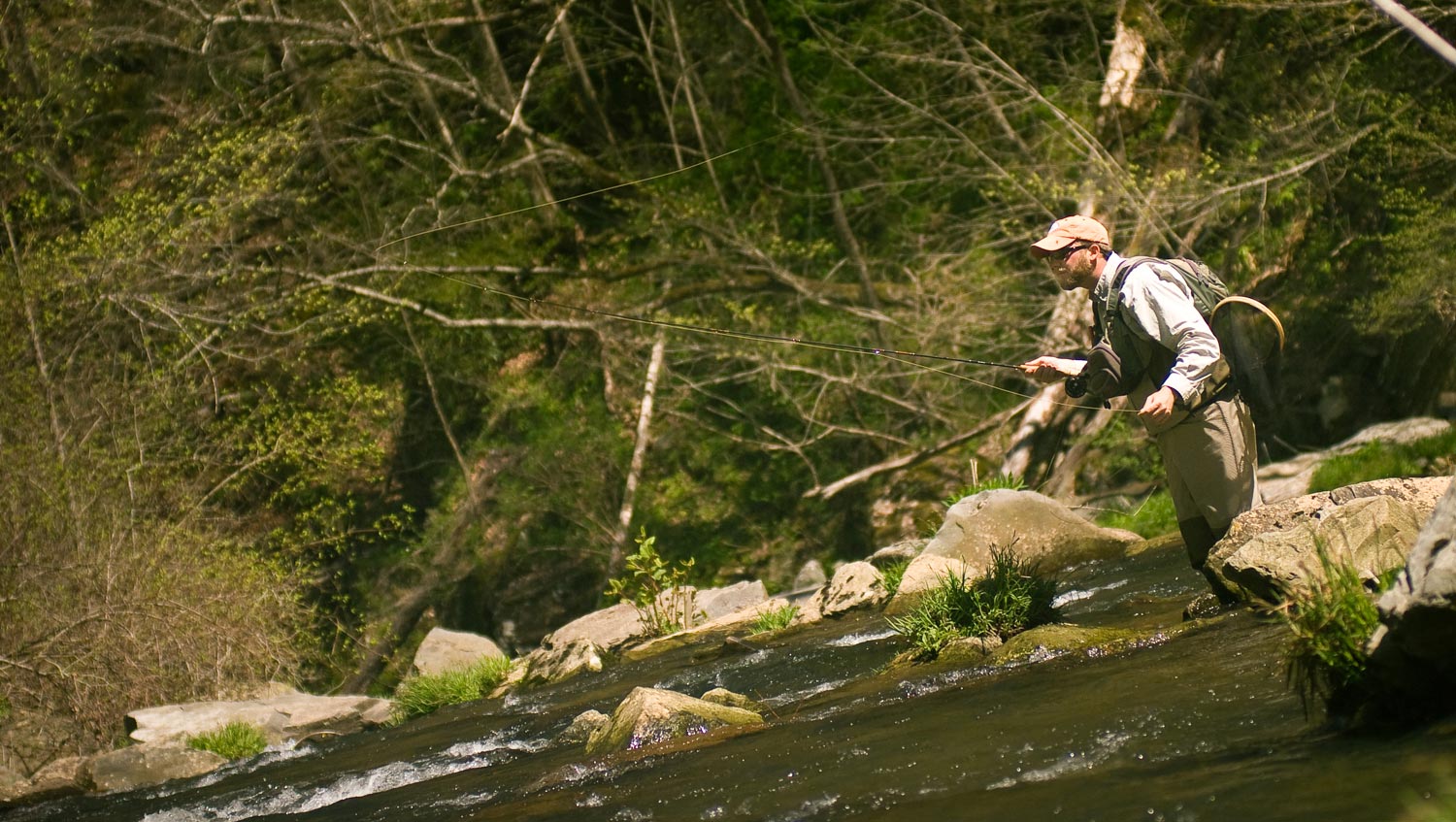
By Devin Olsen
I’ve been fortunate to fish with a lot of anglers fishing a lot of styles over 20+ years of fly angling. One of the things that has separated the great ones from the good-to-mediocre ones is their understanding and execution of mending. While some techniques like European nymphing are effective in part because they don’t require mending (see tacticalflyfisher.com for more information), most fly fishing methods require correct and efficient mending to be consistently successful at catching fish. “So what is a mend and why do you need to do it?” you ask? Here is my quick two-part answer:
Simply put, mending is the repositioning of fly line on the water. It can be done during the drift or with aerial mends during the casting stroke (i.e. reach casting).
It is usually done to achieve a dead/imitative drift when fishing nymphs or dry flies or to manipulate the speed and direction of the swing when fishing streamers or wet flies.
If that wasn’t enough to make things clear, let me expound a bit. If you look down on a river, the current has all sorts of different speeds from one bank to the other. These differences are created by obstructions and the shape of the channel which block, direct, and change the velocity of currents. Because of friction, these currents grab and hold fly lines and compete with each other for their plastic coated prize. In simplest terms, when a fly line is cast across two or more speeds of current, faster currents will move the fly line downstream at a quicker pace than slower currents. “Duh, but what does that have to do with my fly,” you say? The answer depends upon the method you are fishing.
In the simplest general terms again, fly fishing techniques either try to present a fly with the speed of the current that it is in (AKA a dead drift) or in a manner suggesting the fly is swimming at a speed and/or direction contrary to the current (AKA a swung fly). In the dead drift scenario with a fly line across multiple current speeds, the body of the fly line will either be sped up or slowed down by the current relative to the tip of the fly line and your fly. Eventually this pulls the fly faster or slower than the current it resides in. This condition is known as drag and can look like your fly or strike indicator is waterskiing across the water. Drag typically results in few fish being caught if you are aiming for a dead drift. In the swung fly scenario (basically intentional drag), the differing current speeds will affect how fast your fly moves downstream and laterally across the stream. In either of these situations, most anglers are taught on their first day of fishing about the need for mending upstream. This is typically because they are fishing across faster currents to slower currents where fish are saving a bit of energy out of the main current. However, I’ve noticed a lot over the last few years that a lot of anglers (even seasoned ones) have forgotten the need for the downstream mend. I hope the following slides will illustrate the issue with both the dead drift and swung fly presentation. For both scenarios, our master angler stick figure “Bill” will demonstrate the reasoning behind the downstream mend.
In the first scenario, Bill is casting quartering upstream
Read More »Sunday Classic / The Pop Off Shark Leader
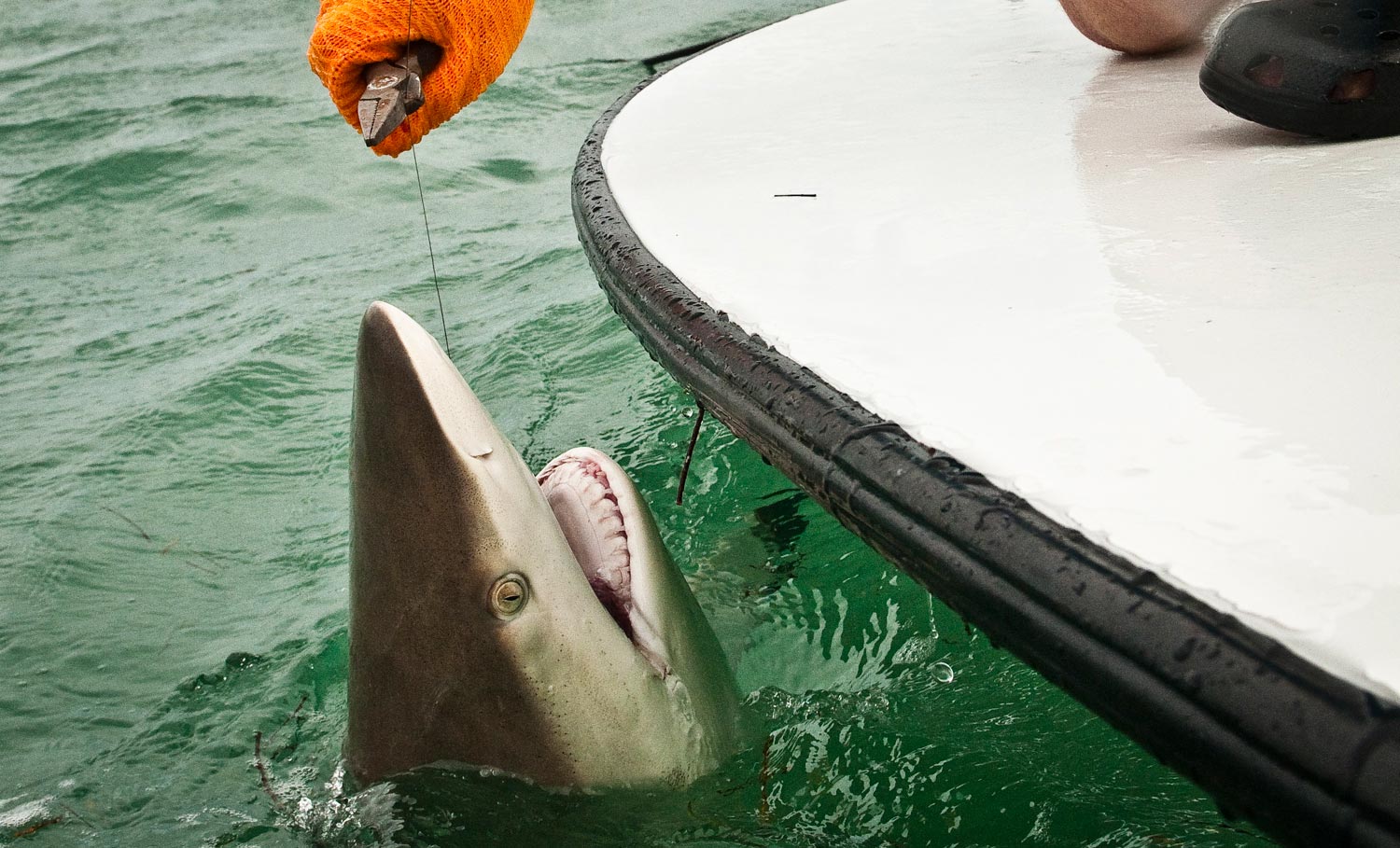
MAYBE IT’S THE KID IN ME BUT I CAN’T RESIST TOSSING A FLY AT A HUNGRY SHARK. I MAKE NO EXCUSES FOR IT. IF SHARKS WEREN’T COOL, SHARK WEEK WOULDN’T BE THE HOTTEST THING ON THE DISCOVERY CHANNEL. THEY’RE BIG, THEY’RE MEAN, THEY’RE STRONG, THEY’RE TOOTHY AND THEY’RE JUST PLAIN COOL.
The problem is, as much fun as they are to hook and fight, landing them can get a little, well… bitey. On several occasions I’ve brought sharks to the boat and seen them come out of the water and clamp down on the gunwale, shaking violently. They have no sense of humor.
My buddy Michael White shares my fondness for sharking and he showed me a great trick for an easy long distance release. When you tie your shark leader use 6 feet of 50 lb fluorocarbon for the butt. Tie a loop in one end and blood knot a piece
Read More »Saturday Shoutout / Tough Love
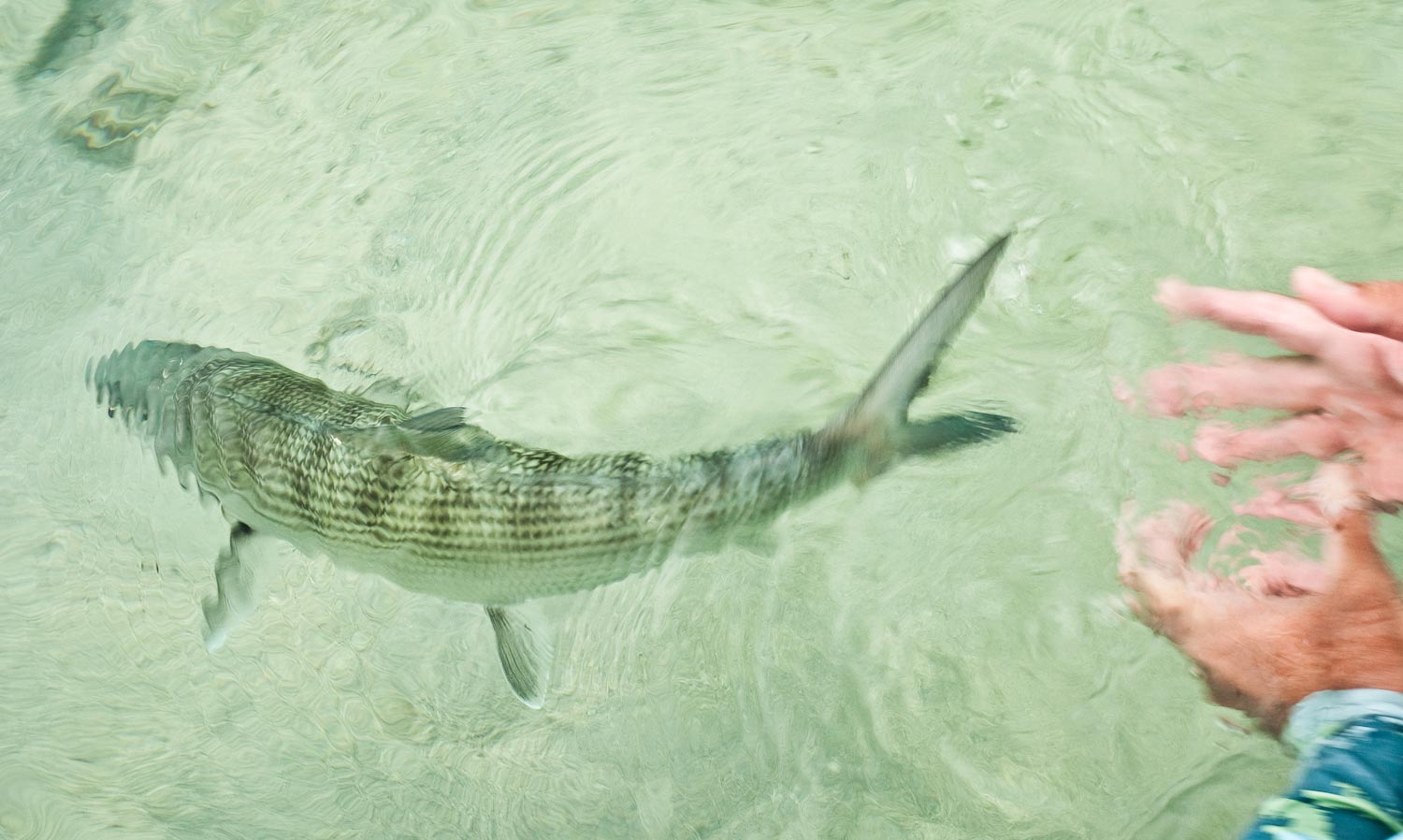
Mike Sepelak learns a lesson about bonefishing and getting your head right.
Not the first guy to learn a life lesson from bonefish guide Torrie Bevins, and surely not the last. This is a great storie about turning a tough day into a magical one. A lesson we can all use from time to time.
Take a few minutes and walk a sand felt with Mike. If you’ve always wanted to try bonefishing, or need some help with your game, join me on the G&G bonefish school. We’ve got you covered.
READ “TOUGH LOVE,” BY MIKE SEPELAK.
Read More »Competition Casting Tips From Tim Rajeff
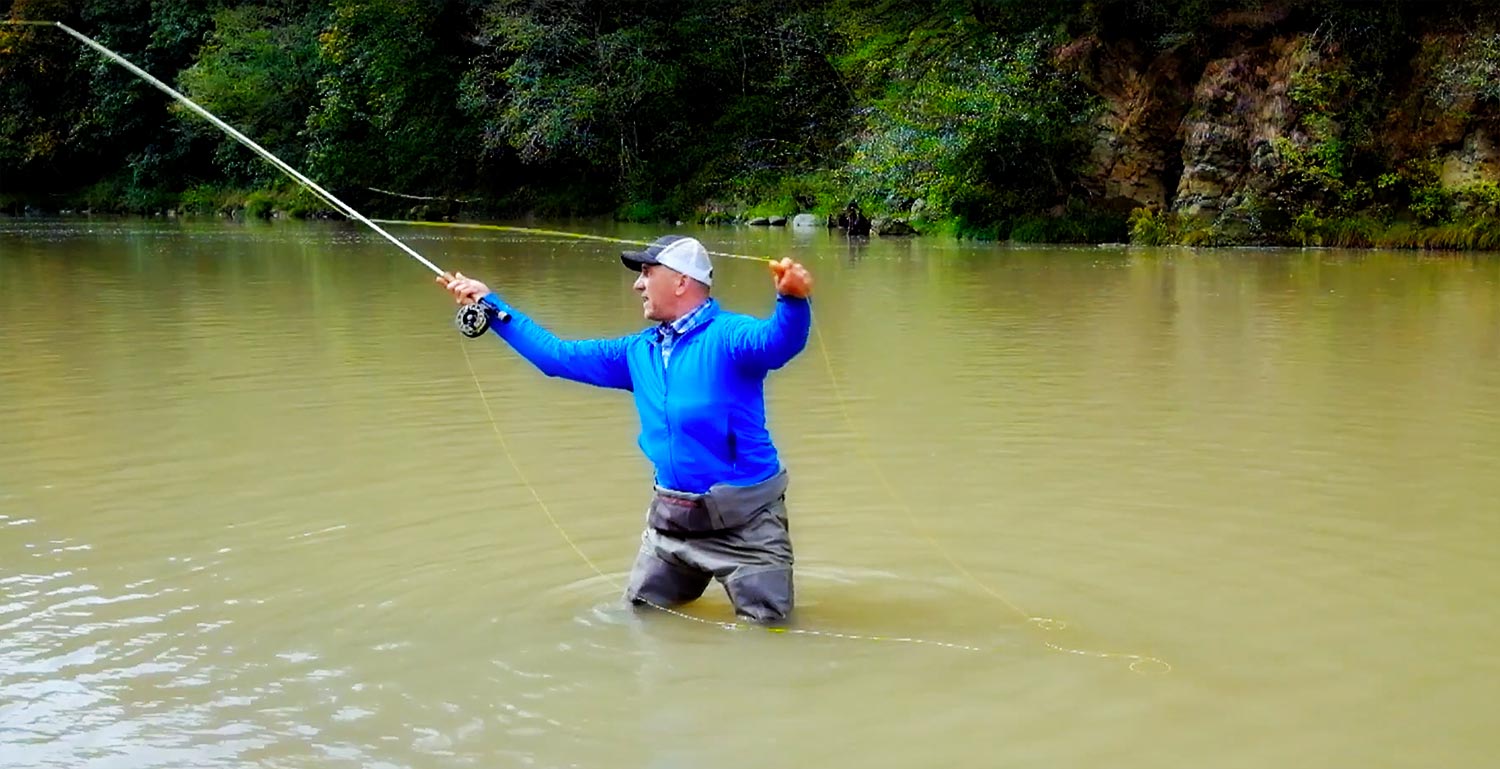
Whether you want to be a winning competition caster or just want more distance for your fly fishing, Tim Rajeff has some tips for you.
When Tim decided he wanted to beat his Brother Steve, the reigning world casting champion, he had to learn a whole new way of casting. Because the two brothers have dramatically different builds, it follows the they would have completely different casting strokes.
In this video Tim shows you two casting styles common in competition casting and discusses how you might determine which is right for you. He covers the pluses and minuses as well as throwing a couple of impressive bombs for your viewing pleasure.
WATCH THE VIDEO FOR COMPETITION CASTING TIPS FROM TIM RAJEFF.
Read More »Fly Tying Tip: Use Contrast Colors For Your Tying Desk
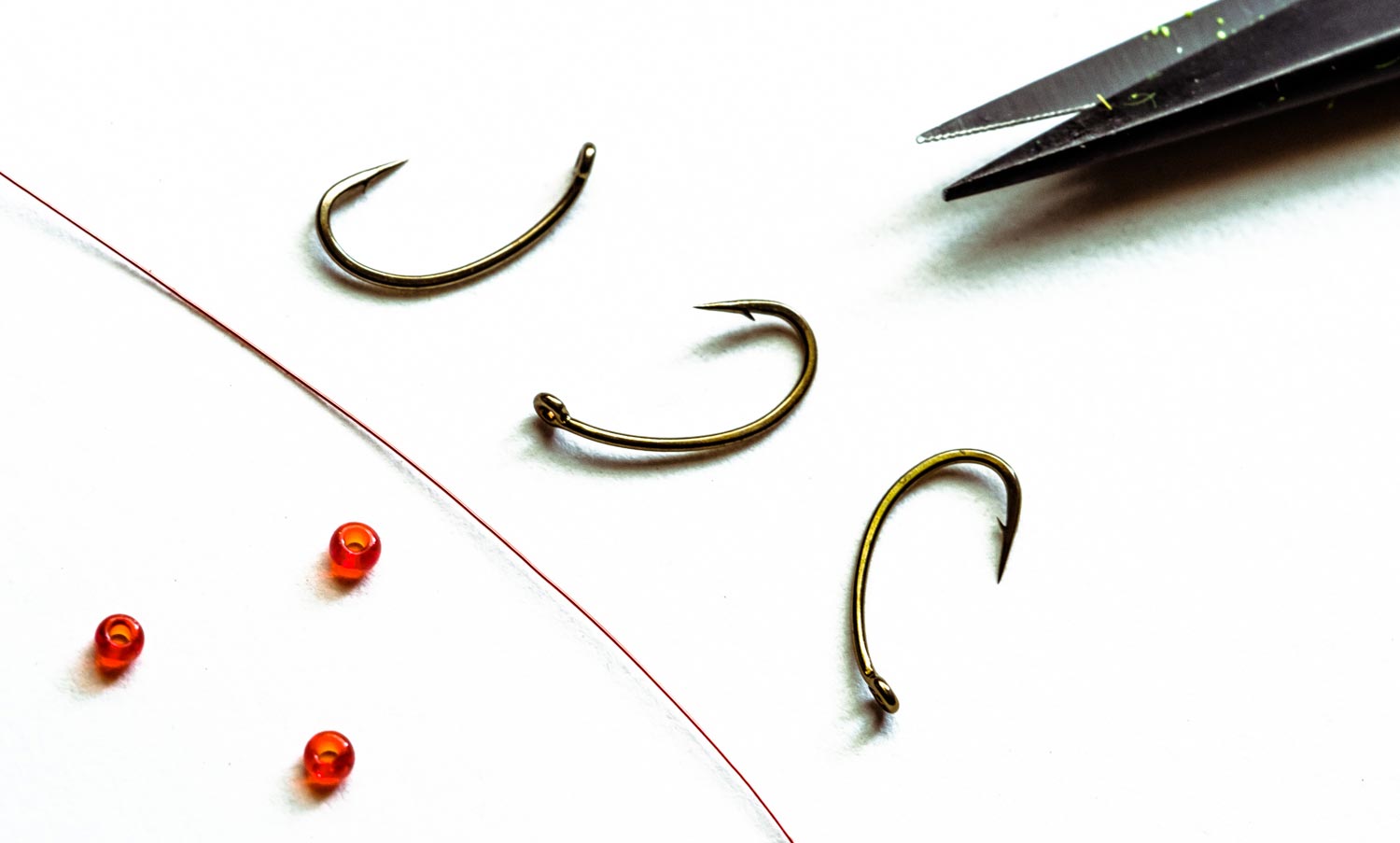
It doesn’t matter if you have been tying flies for one week or thirty years.
Chances are, right now, your tying desk is a chaotic mess of thread, feathers, furs, hooks, and beads. It’s just a fact of the tying life. Despite all of the drawers, containers, and custom pieces that are made to organize all of your tying materials, there will just about always be the scattered remnants of last night’s bourbon-fueled tying session still fluttering around the table top. And, inevitably, that one thing you always need when that new “it fly” idea hits is always missing amongst the piles of marabou trimmings and bucktail clippings. Do I have the end all solution to always keeping your desk spic and span? Nope! That’s all on you. However, I do have a great little tip to help you find the things that you need when cleaning up that tangled mess just doesn’t jive with your mood.
I own a cool roll top desk that is no doubt circa 1983. I purposely purchased a roll top desk because A) they have a ton of drawers to keep stuff in and B) I can close it up and hide the mass destruction that even a taxidermist might gawk at. However, one of the things about my roll top, as well as many others I’ve seen, are that they are often stained with dark tones to accentuate the wood. This makes for a pretty desk, but when it comes to finding a #20 hook amongst the clutter, it’s a damn nightmare.
An easy fix for this is to grab a
Read More »Drop-Offs Are Trout Hot-Spots
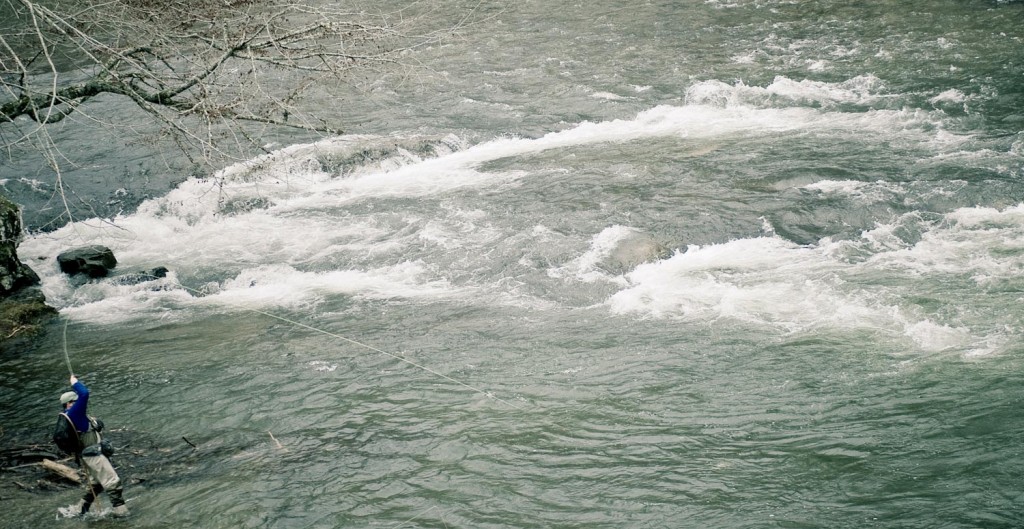
Adjacent – just before, after, lying near; neighboring
Drop-offs located adjacent to shallow water are trout magnets.
The slower moving water and cover found downstream of drop-offs are the two main reasons trout are drawn here. If you’re looking for super consistent water where you can almost always find trout, you should be searching out dropoffs on your streams and rivers where shallow water transitions into deeper water. The more significant (larger the area) the stretch of shallow water is, the more appeal the adjacent drop-offs will have over trout, especially when the shallow water upstream or downstream holds very little cover.
I regularly float over a long stretch of shallow unproductive water on my home tailwater. It’s about 200 yards long, calf deep at best, and it’s completely barren of any form of trout cover. The trout hate this section of the river because they’re sitting ducks to predators looking for an easy meal, and there’s nowhere for the trout to find refuge out of the excessive current. I’d say it’s a completely worthless piece of water on the river, but the fact is, it does serve a valuable purpose for us fly anglers. This long stretch of desolate trout water, makes
Read More »Echo EPR Saltwater Fly Rod Review
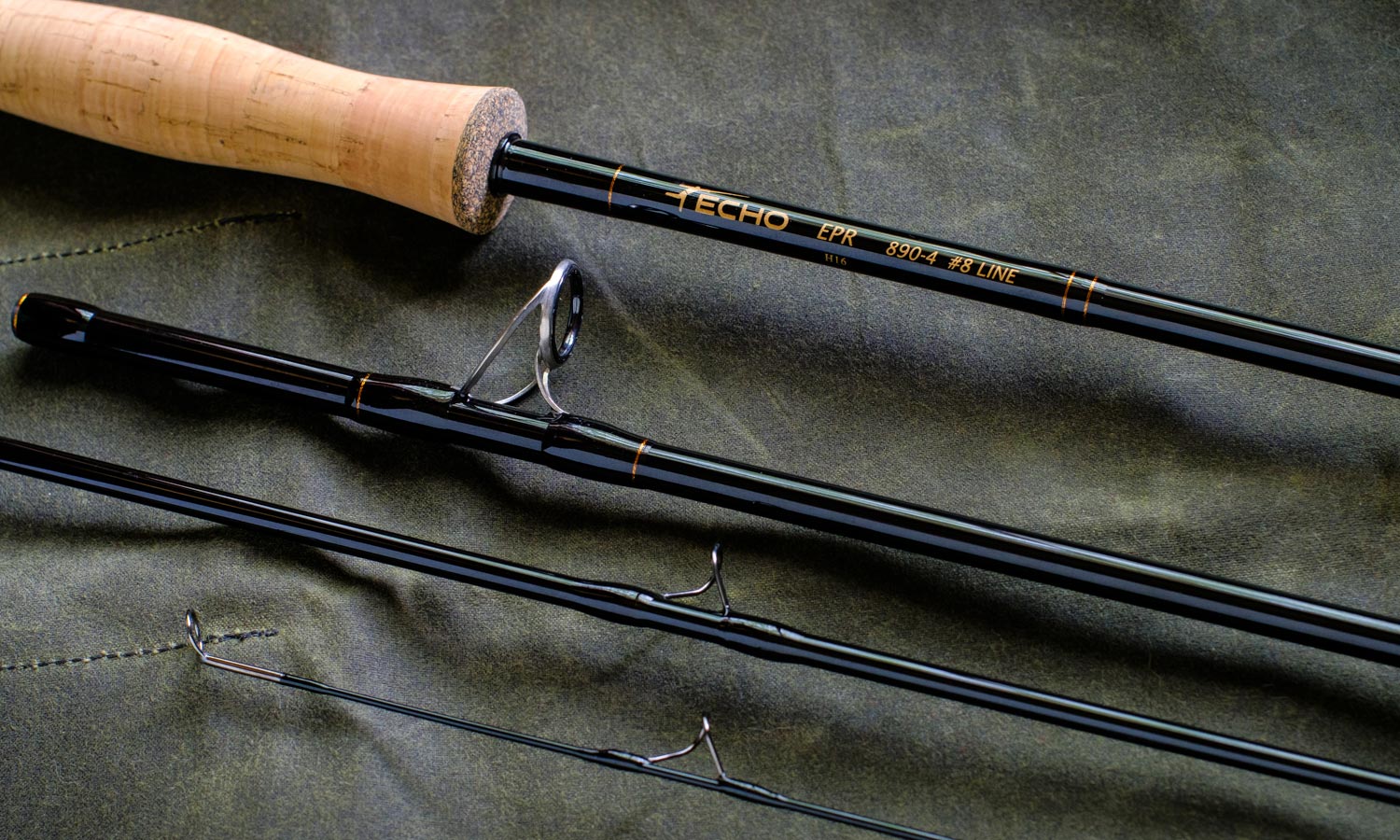
I’ll put this simply. The Echo EPR out fishes rods at twice the price.
Let me tell you a story about how I fell in love with this rod the first time I cast it. I did something I’d tell any angler to never do. I flew down to Abaco, Bahamas for my March hosted trip and went out the first day with a rod I’d never cast and a line I chose on a guess. I needed to test the rod and just hadn’t had time, so I made a bold choice and hit the water.
I was out that morning with a good friend and guide Travis Sands, who’s a bit of a local rockstar. The wind was absolutely howling. My buddy got a fish and I stepped up on the bow with my new EPR. As I was stripping line off the reel, Travis spotted a fish.
“Bonefish at…ummm…I don’t know, it’s an impossible shot.”
“Where is he?” I asked.
“Three o’clock, at 70 feet,” Travis replied with an almost sarcastic tone.
That meant the shot was a backhand cast, directly into the wind. I spotted the fish. My philosophy is that you try to catch every fish, especially the impossible ones. So my first cast at a fish with this rod was 70 feet, backhand into the wind. Two strips and he was on. Travis was dancing and singing on the platform. As soon as I released the fish he jumped down and asked to cast the rod. He loved it and so did I.
No fly rod is going to make every shot like that a payday but there are a whole lot of rods that will never do it. The more I fished the EPR, the more confidence I had in it. I had six 8-weights on that trip and the EPR quickly fell into the top two. At $449, it’s about half the price of the next cheapest rod in that collection.
I’ll be honest, I had
Read More »G&G / Fishpond Fishing Dog Photo Contest

G&G and Fishpond are teaming up to help some pups in need and give you some cool gear.
John Le Coq, founder of Fishpond, and I have a fair bit in common. We each have a profound love for fly fishing and public land, we are both photographers and we both have a new puppy. The same week I was bringing Josie, my little potcake, home from South Andros, John was falling in love with a dog on the beach in Mexico. Playa made the trip home with him to become part of the Fishpond family.
This just seemed like too much to ignore so we dreamed up a plan to get the G&G community into the fun! We combined three of the things we love and created the G&G / Fishpond Fishing Dog Photo Contest. It’s not just for fun. In addition to receiving some sweet Fishpond dog gear, the winner will have a $250 donation made in their name to the dog rescue of their choice.
Here’s all you have to do.
Send us a photo of an awesome fishing dog before midnight, May 14th. We will select a winner based of photographic merit and canine adorableness and share the winner on G&G. It’s that simple. Fishpond will send you a dog bed, food/water bowl and leash, and together we will send $250 to your favorite dog rescue.
It’s not a requirement that you share your entries on social media, but we encourage it. If you do, please use the tags @ginkandgasoline @fishpondusa #g&gfishingdogphotocontest.
TAKE THOSE DOGS FISHING AND SHOW US WHY THEY DESERVE TO BE FAMOUS!
Contest rules
Read More »Sunday Classic / 13 Proven Streamer Patterns for Trout
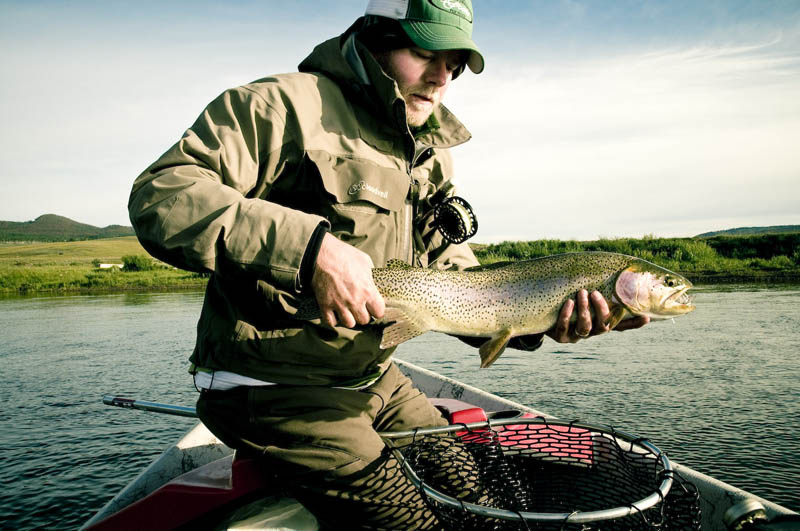
This past Monday I wrote an article stressing about the importance of experimenting with different streamer retrieve speeds and stripping lengths, until you find a winning combination that the trout find the most enticing. Generally, when you’re paying close enough attention when your streamer fishing, you’ll notice one type of streamer retrieve that works hands down better than the rest. If you don’t find this to be the case and you’re not catching fish with streamers, it probably isn’t the best tactic for the day you’re fishing. My testimony and theories provided in my previous post were gathered from many years of streamer fishing for trout, but were validated and backed up further from guide trips as recent as this past week. We had several comments on the post, with one of our followers requesting I write a follow up post showcasing some of my favorite streamer patterns. Here you go Matt.
Read More »Saturday Shoutout / Thanks Perk

Here is a digital copy of a full page ad in the Miami Herald, an open letter to Governor Rick Scott and the FL legislature from Orvis CEO Perk Perkins.
It’s refreshing, in these days of corporate excess, to see a company and it’s leaders put their money where their mouths are. I don’t know of a company in fly fishing who does more for the natural resources we enjoy than Orvis. In particular, through the vision of Perk Perkins.
I don’t know Perk well. We email once in a while and I know him to be a thoughtful guy. I do know him by his deeds, and especially his work in conservation. The list of organizations he has sat on the boards of is impressive. More impressive is the 5% of pre-tax profits Orvis donates to conservation.
Orvis has dedicated itself to the Now or Neverglades campaign. Running this ad, which is sure to ruffle some very powerful feathers In the sugar industry took backbone. It would have been much easier to play it safe, and much less effective.
Good work Perk! And thank you for all that you do for us, the angling community.
IF YOU HAVEN’T SEEN THIS VIDEO, PLEASE TAKE A MINUTE TO WATCH.
Read More »